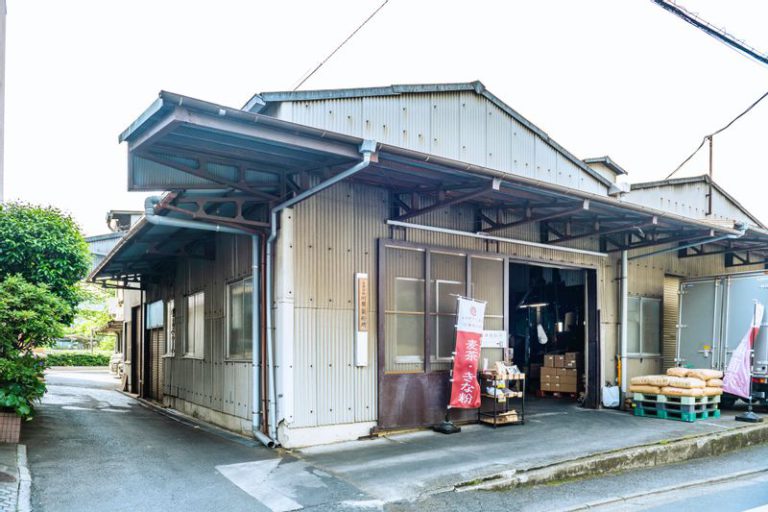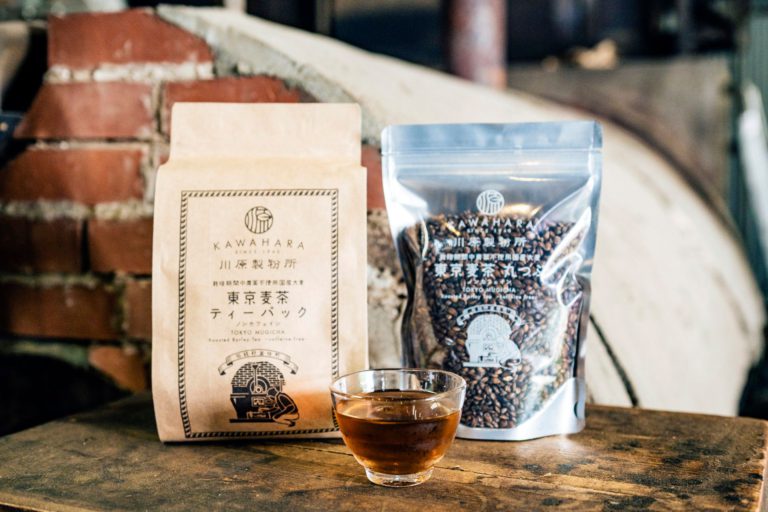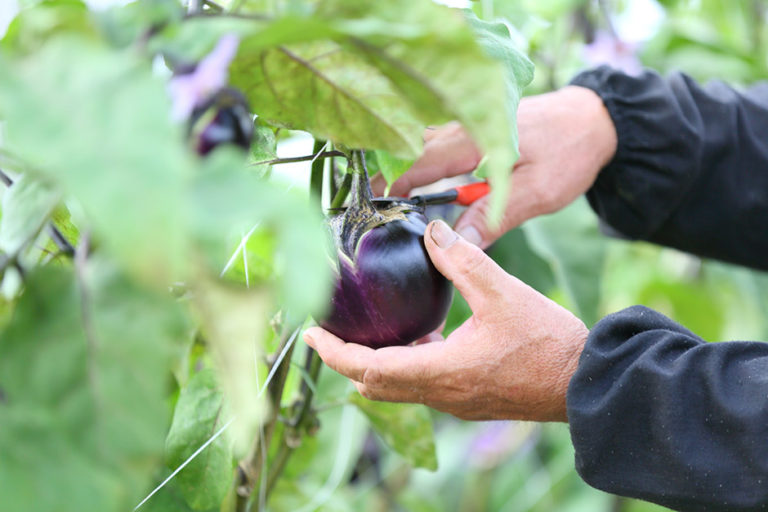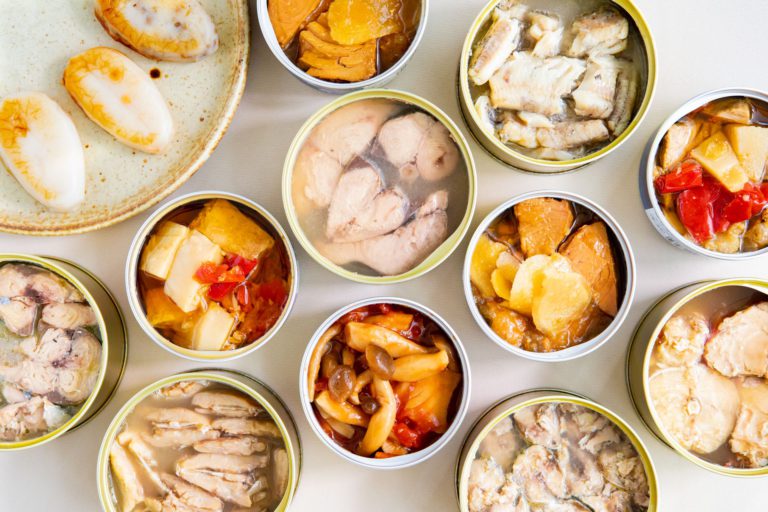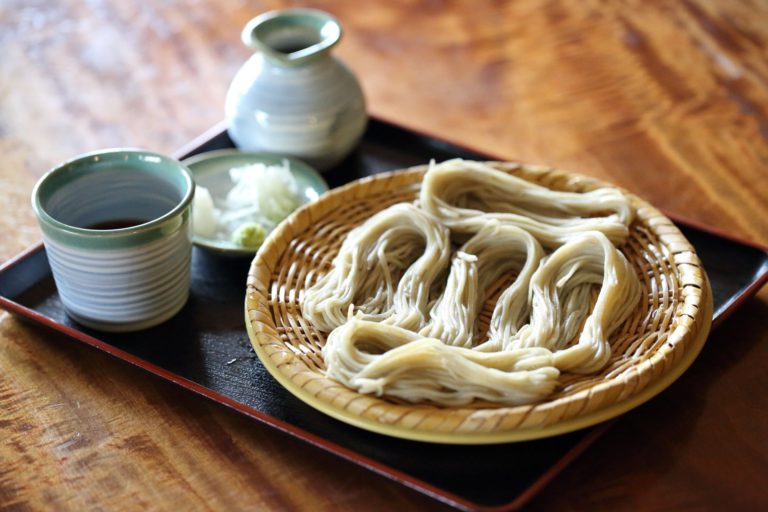Tokyo Mugicha—the Fragrant Tea Created by Skilled Roasting Techniques

In this time’s article, we visited the Kawahara mill, which manufacturers mugicha in Tokyo, and delved into the history and details of mugicha, Japan’s staple summer drink.
Kawahara continues on with its traditional sand-oven roasting techniques
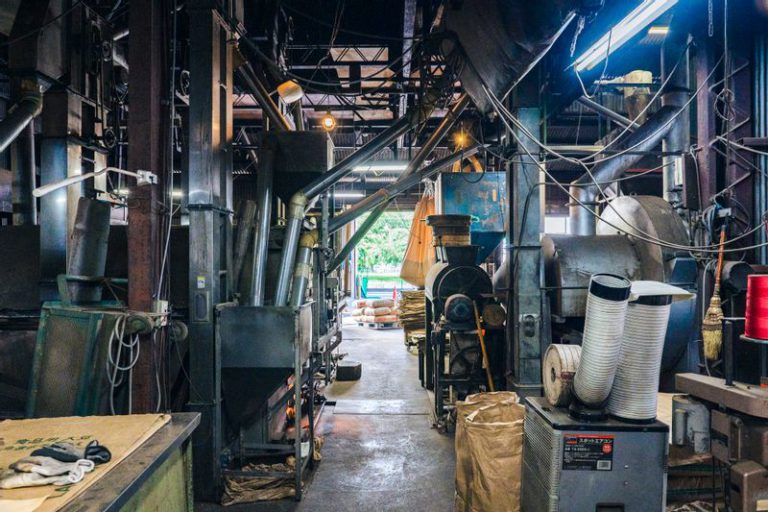
Kawahara has been manufacturing mugicha in Nerima, Tokyo ever since 1940. When strolling along the Shakujiigawa River, one is greeted with the fragrant aroma of roasted barley from the mill. The company was founded during the war, when Nerima was still a part of Itabashi. Nerima had the most agricultural areas in the 23 wards of Tokyo, and one can still find many fields and vegetable stands in residential areas.
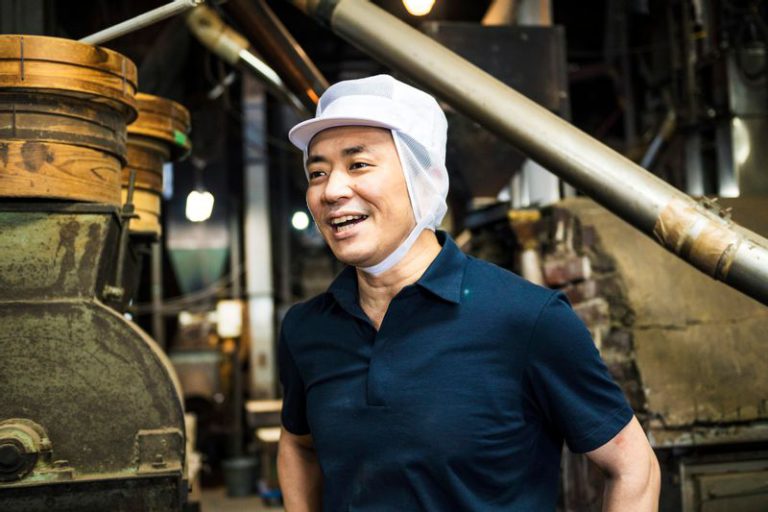
“Back in the day, there were many farms in this area, so the founder of this company built a factory to process harvested rice and barley,” says Wataru Kawahara, the third generation company representative. He is also a father to four children, with the entire family in love with mugicha.
The factory manufactures soybean flour, baking ingredients, and roasted bran along with its main operation of roasting barley for mugicha. All of the products are created with the utmost care towards showcasing the ingredient’s original flavor with seasoned techniques. Of these products, their mugicha is roasted using a traditional sand oven to bring out the rich flavor of barley that Mr. Kawahara aims for.

The difference between Kawahara and other manufacturers is clear when we look at the roasted mugicha grains. Conventional hot-air roasting creates small and bright-colored grains, but the Kawahara mugicha grains vary in color from light to dark, as they expand and swell when roasted. Mr. Kawahara notes that this “uneven roasting” by sand oven is what makes delicious mugicha.
“Grains that have been deeply roasted offer a fragrant aroma, while grains that have been lightly roasted provide sweetness. Combining these two elements create a rich flavor when making mugicha. Creating a perfect balance of uneven roasting is the key. It is something only an experienced craftsman can do.”
The history of mugicha, which is older than that of green tea
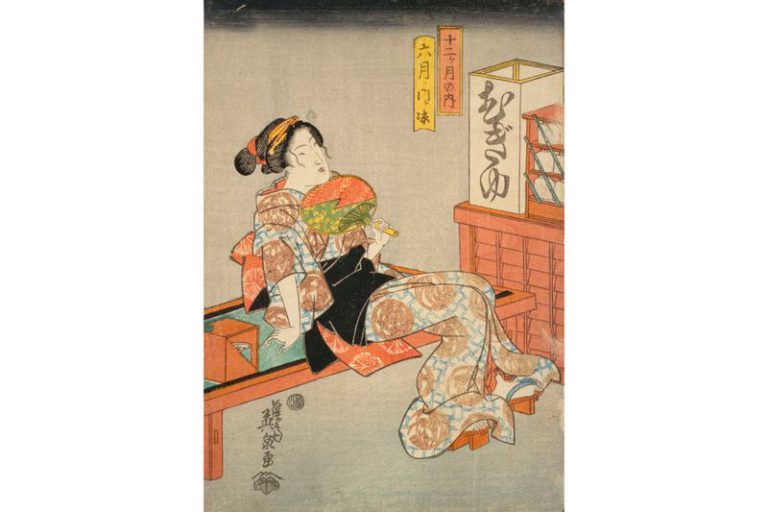
Source: National Diet Library Digital Collections
As a matter of fact, the history of mugicha is said to be older than that of green tea. It is said that originally, people used to ground roasted barley into powder and dissolve it in hot water to drink. This was enjoyed mainly by aristocrats up to the Muromachi period (1336-1573). In the Edo period (1603-1867), the drink had spread to the masses as mugiyu (hot barley), with popular night stalls specializing in mugiyu served by young women.
The custom of drinking mugicha in the summer comes from the fact that barley is harvested in early summer. Tea made from roasting freshly harvested barley was said to be extremely delicious. The Kanten-kenbunki (a record of the Kansei to Tenpou eras) says that “In summer evenings, mugiyu stall lanterns are put up in each town, benches to enjoy the cool evenings are set up and tea shops are opened. This is a fairly recent phenomenon that was not seen before.”
By 1955, as refrigerators started to be a common appliance in everyone’s home, the habit of drinking cooled mugicha spread, resulting in products that allowed consumers to boil their own mugicha at home. With this, it became popular as a tea everyone could enjoy at home. What is more, as mugicha is rich in minerals that are often lost as we perspire, it may be what our bodies naturally desire in the summer.
The deep flavor of "Tokyo Mugicha" is only achieved by sand ovens
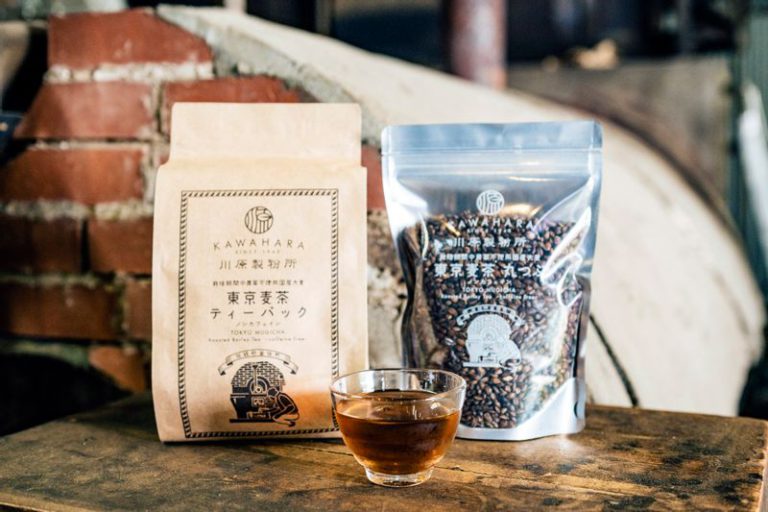
Mr. Kawahara launched the Tokyo Mugicha series in 2017, to provide specialty mugicha to more people. The product uses a sand oven for roasting and only domestic six-row barley grown without any agricultural chemicals by contracted farmers. The product has been growing in popularity, especially between younger generations, because of its rich flavor and stylish packaging.
“In addition to conventional tea shops and wholesalers, major department stores and trendy lifestyle shops have also started to line their shelves with our products. Although our products cannot compete pricewise with major mugicha manufacturers, I wanted to create a mugicha that only we could make,” says Mr. Kawahara.
We got a glimpse at the roasting process, to see how this special Tokyo Mugicha is created.
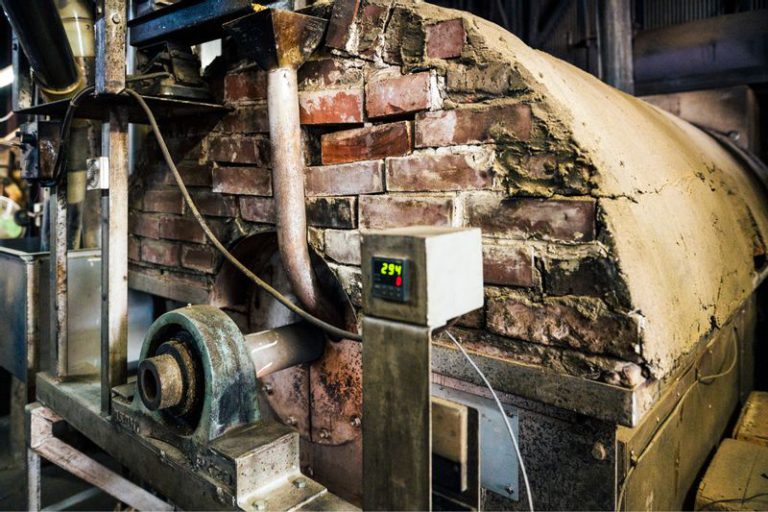
The cylindrical brick kiln contains sand spinning around inside it, heated up to 300℃. The sand oven method puts barley into this hot sand and roasts it gradually. The mill has two sand ovens in which barley is roasted for 30 seconds in the first oven, and 90 seconds in the other, which is surprisingly quick.
The craftsmen check how the roasted barley looks, and changes the quantity put inside the oven to fine-tune how the product is roasted.
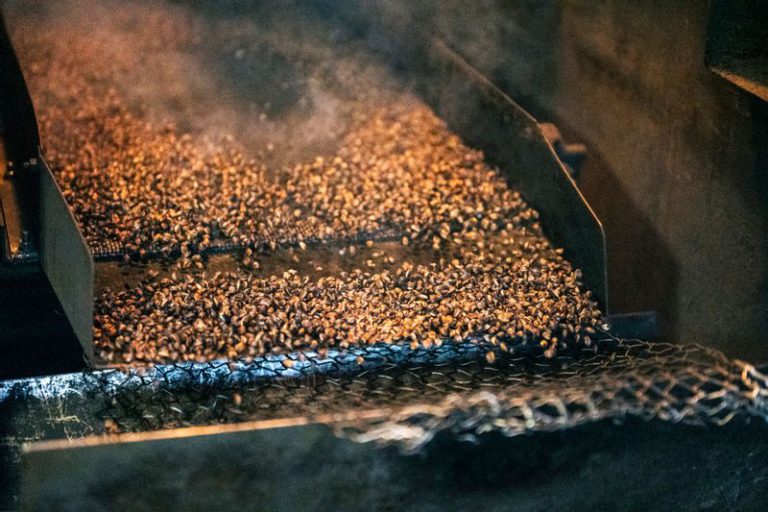
Mr. Kawahara explains, “In order to evenly release moisture from the barley, the power of these sand ovens is adjusted according to the weather and barley moisture. Mugicha is most fragrant just before it starts to burn, so it needs to be fully roasted just in time. This is a difficult task that even the most seasoned craftsmen sometimes fail at.”
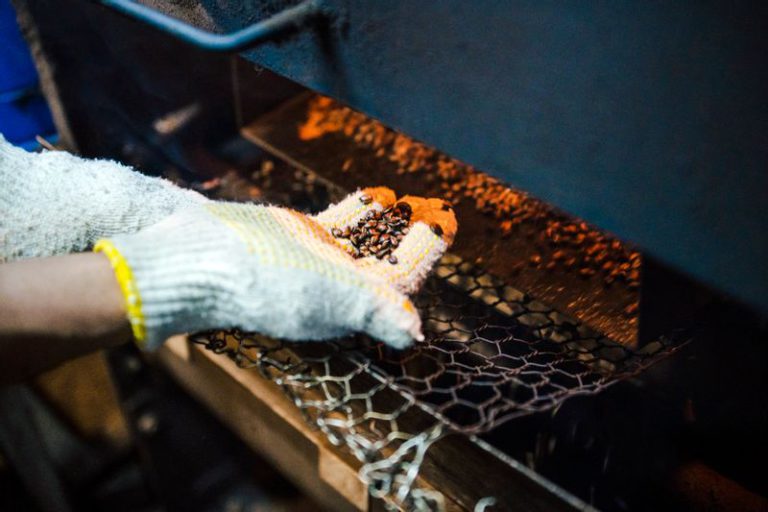
The inside of the mill is sweltering hot due to the sand ovens, making work during the summer extremely difficult. Tokyo Mugicha, which is painstakingly created in this way, is highly fragrant even without crushing the grains. When prepared, one can enjoy the rich aroma before being hit by sweetness and a subtle bitterness that creates layers of flavor.
Tokyo Mugicha features round-grain products specially for brewing with hot water, and tea bags for cold brewing. To enjoy the fragrance of mugicha to its fullest, we recommend the classic round-grain type. “When preparing tea in a cold-brew style, steeping the teabag in hot water before adding cold water will easily create strong, fragrant mugicha,” says Mr. Kawahara. Steeping one teabag in 200 ml of hot water before adding milk to create mugicha-latte also sounds tempting.
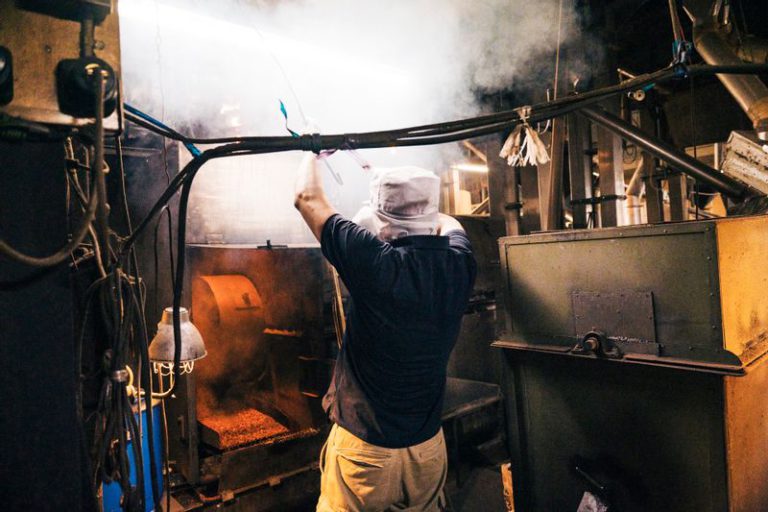
Mr. Kawahara says he has more ideas to follow Tokyo Mugicha.
“Our mill will be celebrating its 100th anniversary in about 20 years, so I have a lot of work to do,” he laughs while talking about how he wants to continue making mugicha in the traditional way. Why not enjoy some coolness in the summer with some Tokyo-born mugicha?

